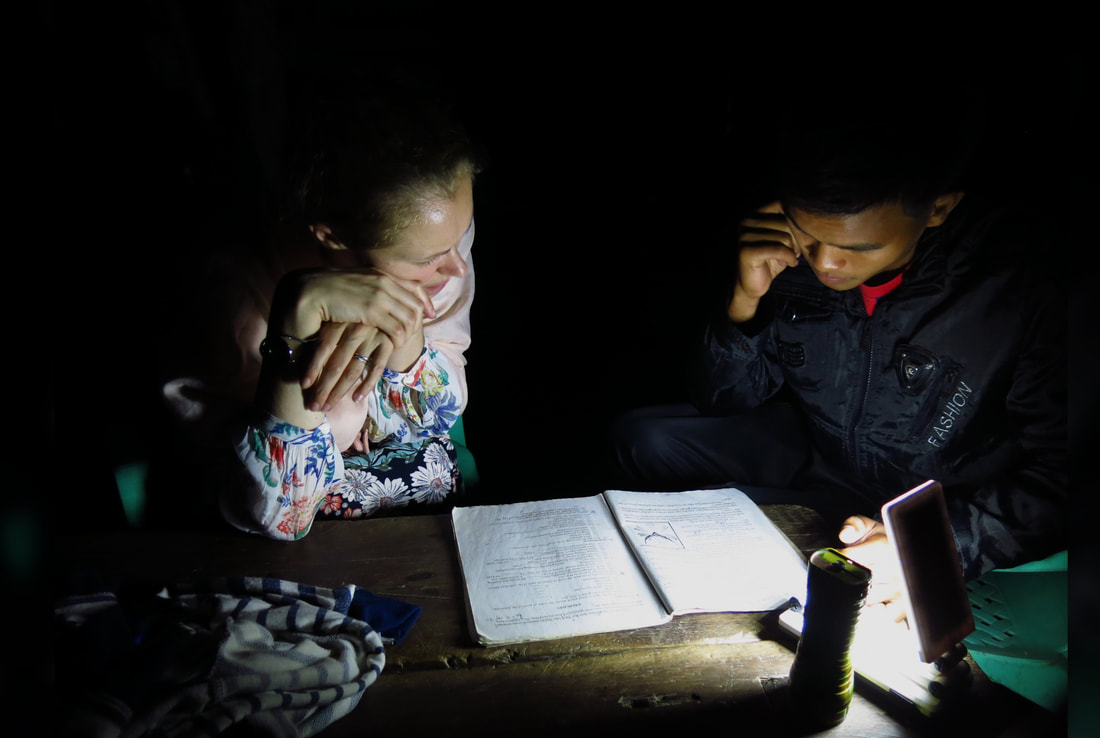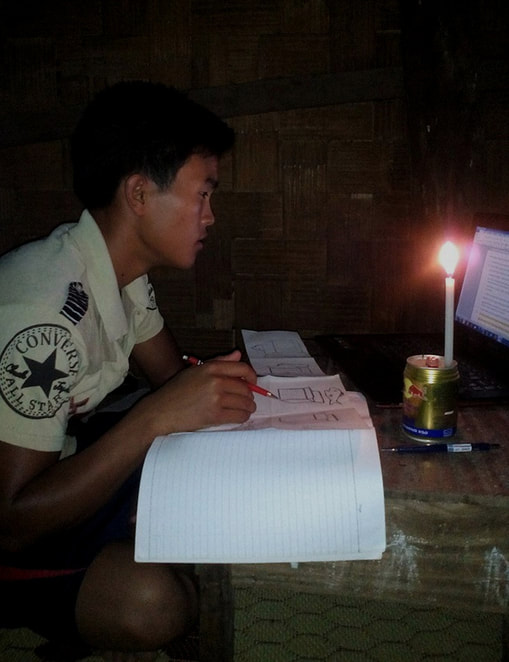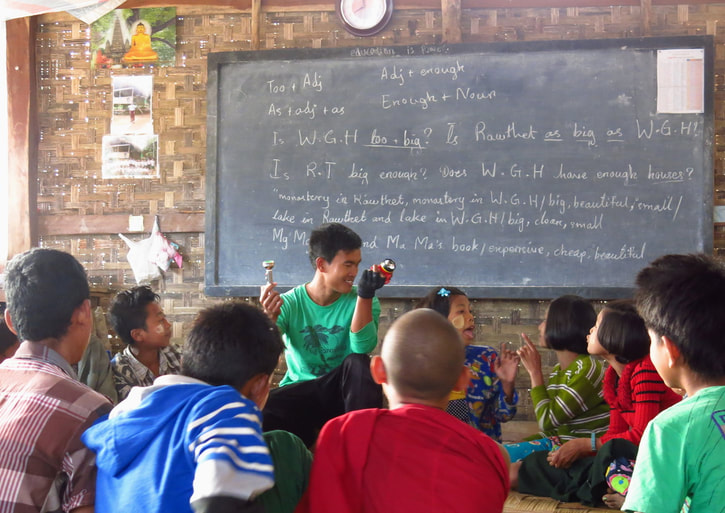|
We had been away for a week. This morning the teacher had decided to try a mix of Myanmar and active style learning. The teacher explained ‘too’ and ‘enough’ for 12 minutes to his grade 8 students. He wrote on the board. The writing was white and quite clear but small as the teacher underlined and made additions while speaking in quick-paced Arakanese. He has often expressed the lamentation that he is not a good teacher because he is bad at explaining concepts. I keep using useless words to tell him that explaining is not necessary. But the very act of me explaining that explaining is not necessary is hypocritical. I am getting frustrated and he is too. He keeps saying that he previously thought that teaching was easy and straightforward. Now, he worries each day that he hasn’t planned the lesson correctly and he worries that he isn’t doing a good job of teaching. While I worry that he will be overloaded and break from the pressure of overhauling everything he has ever known about education. I also worry that I will not be able to demonstrate what I want done to an effective level. I am learning more and more during my stay in Myanmar that teaching is not only my job, but my hobby and indeed my life. If I am not in the classroom, I am planning, and when I am not planning, I am contemplating a grammatical curiosity. It is essential for me to understand the usage of language if I am to teach it effectively. Language must be presented in as natural a way as possible. That is why it is so hard to plan and teach in the active style. Think of it as mimicking the way babies and young children learn if you will: acquisition. No thought, no learning grammar rules, just immersion and repetition. I personally became acquainted with many cats who were sitting on mats when I was taught how to read and write in my native tongue. It is this pure simplicity which makes planning so time-consuming. The teacher must think of all the natural ways in which we use the language and then fix a strong context that the students will remember and associate with the target language in question. I had previously complained the the local teacher was content to nod agreement as I postulated theories and ideas to get the cogs working in each student’s brain. The lessons need to flow and be simple for the students to perform; as the teacher you must guide them. This means a lot of thinking and planning beforehand. Now, the local teacher trainee was staying up until 1 AM to plan. However, with me being asleep it means that I cannot check the plan. I could awaken at 4 AM, but it is useless if the trainee is still sleeping. The task of planning needs both of us to contemplate, change and bounce ideas off one another. In practice; I need to concept check why we are planning the way we are. I need to guide him through scaffolding and I need to be awake to read the plans that he produces. Otherwise we all fail. At 7:47 AM, 17 minutes into the lesson, the teacher was still blathering on in some earnest but useless explanation of ‘too + adjective’ and ‘enough + noun’. He decided that the tried and tested method of the marketplace was worth using again. I disagree to be perfectly honest, but even if the concept was correct, the application of the context was not useful for the learners. The teacher was now asking students to compare two items from the market. The problem being that he was only using two torches for all of the 20 students. It was boring and repetitive. The students were not engaged. Not that I can blame them. Van and I had noted that many people bandy around the words in Bloom’s taxonomy without really paying attention or applying those concepts. What we were witnessing in this lesson was withering and not the blooming we had hoped for.
We had been away for 5 days and left our trainee to his own devices. Clearly at this delicate stage that was not optimal, but it was necessary as I had to collect my belongings in order to move to the village for the remainder of my time in Myanmar. At the end of the lesson he came over, looking forlorn, and asked if there was simply too much material for a 90 minute lesson. He told us how he knew it had gone badly, but that he didn’t know exactly where the problem had been or how to fix it. He mused that he needs to plan in greater detail. Of course, I am not one to disagree with this sentiment as I plan my lesson, then think through it as it will happen in the classroom before fixing anything that I might have overlooked. As soon as I return from the lesson I make any adjustments that played out during the course of the lesson and change anything that didn’t quite work. I strongly believe that complacency is the way to achieve failure and I will rarely teach the exact same lesson twice as each group of students is different and should be treated as such. I am glad that he is able to see the short-comings. The next stage of course is self-correction. For now, self reflection will have to do. Chloe Smith NEH Coordinator and Teacher Trainer Related Posts: Curriculum Planning Virtual Planning Consequences of Not Planning The Benefits of Planning Planning for Student Engagement Planning for Class Changing Plans as We Teach
Comments
|
This section will not be visible in live published website. Below are your current settings: Current Number Of Columns are = 3 Expand Posts Area = 1 Gap/Space Between Posts = 20px Blog Post Style = card Use of custom card colors instead of default colors = Blog Post Card Background Color = current color Blog Post Card Shadow Color = current color Blog Post Card Border Color = current color Publish the website and visit your blog page to see the results |
|
© New Education Highway 2024
Except where otherwise noted, content on this site is licensed under a Creative Commons Attribution 4.0 International License. |




